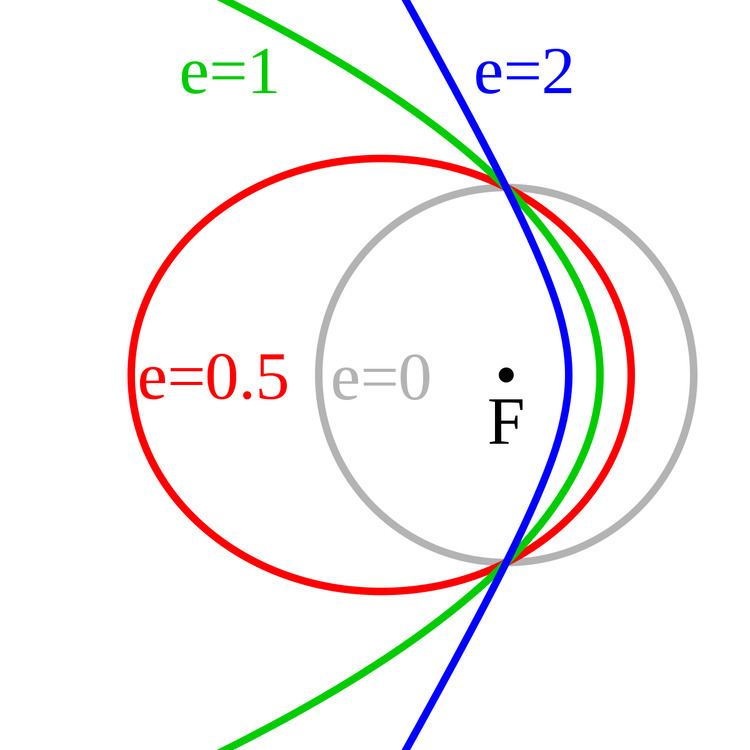 | ||
In astrodynamics or celestial mechanics a parabolic trajectory is a Kepler orbit with the eccentricity equal to 1. When moving away from the source it is called an escape orbit, otherwise a capture orbit. It is also sometimes referred to as a C3 = 0 orbit (see Characteristic energy).
Contents
Under standard assumptions a body traveling along an escape orbit will coast along a parabolic trajectory to infinity, with velocity relative to the central body tending to zero, and therefore will never return. Parabolic trajectories are minimum-energy escape trajectories, separating positive-energy hyperbolic trajectories from negative-energy elliptic orbits.
Velocity
Under standard assumptions the orbital velocity (
where:
At any position the orbiting body has the escape velocity for that position.
If the body has the escape velocity with respect to the Earth, this is not enough to escape the Solar System, so near the Earth the orbit resembles a parabola, but further away it bends into an elliptical orbit around the Sun.
This velocity (
where:
Equation of motion
Under standard assumptions, for a body moving along this kind of trajectory an orbital equation becomes:
where:
Energy
Under standard assumptions, specific orbital energy (
where:
This is entirely equivalent to the characteristic energy (square of the speed at infinity) being 0:
Barker's equation
Barker's equation relates the time of flight to the true anomaly of a parabolic trajectory.
Where:
More generally, the time between any two points on an orbit is
Alternately, the equation can be expressed in terms of periapsis distance, in a parabolic orbit rp = p/2:
Unlike Kepler's equation, which is used to solve for true anomalies in elliptical and hyperbolic trajectories, the true anomaly in Barker's equation can be solved directly for t. If the following substitutions are made
then
Radial parabolic trajectory
A radial parabolic trajectory is a non-periodic trajectory on a straight line where the relative velocity of the two objects is always the escape velocity. There are two cases: the bodies move away from each other or towards each other.
There is a rather simple expression for the position as function of time:
where
At any time the average speed from
To have
